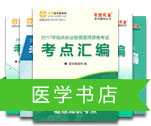Health of the elderly
The increase in the number of old people in the world will be one of the most profound forces affecting health and social services in the next century. Overall, the world s population has been growing at an annual rate of 1.7% during the period 1990-1995 - but the population aged over 65 is increasing by some 2.7% annually. Of a world total of 355 million people over 65 in 1993, more than 200 million are in the developing world, where they make up 4.6% of the population, with more than 150 million in developed countries, where the proportion is 12.6%. Although Europe, Japan and the USA currently have the 'oldest' populations, the most rapid changes are being seen in the developing world, with predicted increases in some countries of up to 400% in people aged over 65 during the next 30 years.
Alongside the increase in the number of people over age 65, there will also be a dramatic rise in the numbers of 'old old' - people over 80. In 1993 they constituted 22% of those over 65 in developed countries and 12% in the developing world. The world elderly support ratio (the number of people over 65 years compared to those aged 20-64) in 1990 was 12 elderly to every 100 people of working age. It is estimated that the figure will be 12.8 in the year 2000 and 13.2 in 2010. In other words, while population increase during1990-2000 is estimated to be 17%, the increase in the number of elderly is likely to be 30%.
One of the most difficult questions for health planners and politicians trying to allocate funds, as well as for the community and individuals themselves, is whether increased life expectancy means more health or simply more years of sickness. This is an area that is greatly underresearched, yet the question is assuming ever greater importance.
Two of the most pressing problems in the future will be the provision of care for people with dementia and those needing joint replacements for arthritic diseases. WHO estimates that there are 165 million people in the world with rheumatoid arthritis. The long-term care of the frail elderly is becoming one of the most debated medical and political issues in many developed countries, and the developing world too will soon have to wrestlewith it. If people are not to be left destitute and uncared for at the end of their lives, more attention must be given to social mechanisms for the support of the elderly and the means to fund them.
General health issues
Although in the past 10 years there has been a global trend towards the democratization of political systems, the much anticipated 'peace dividend' has failed to materialize. Poverty has continued, and will continue, to be a major obstacle to health development. The number of poor people has increased substantially, both in the developing world and among underprivileged groups and communities within developed as well as developing countries. During the second half of the 1980s, the number of people in the world living in extreme poverty increased, and was estimated at over 1.1 billion in 1990 - more than one-fifth of humanity.
The changing demographic picture across the world, together with the rapid shift towards urbanization, will have profound implications for the delivery of health services. The unplanned and often chaotic growth of megacities in the developing world will pose particular challenges, as poor sanitation and housing encourage the spread of infectious diseases. form www.med66.com
Against any optimism about the global economy throughout the remainder of this century and beyond should be set a number of major uncertainties. There has been a disproportionate flow of resources from the developing to the developed world - poor countries paying money to rich ones - because of debt servicing and repayment and as a consequence of prices for raw materials that favour the latter at the expense of the former. Structural adjustment policies aimed at improving the economic performance of poor countries have in many cases made the situation worse. The words of Robert McNamara, spoken in 1980 when he was President of the World Bank, still hold true: 'The pursuit of growth and financial adjustment without a reasonable concern for equity is ultimately socially destabilizing'.
A further worrying global trend is growing unemployment, especially in developing countries without social security arrangements to cushion those out of work. Long-term unemployment is creating a new class of 'untouchables' - by excluding a large group of people from the mainstream of development and society. The unemployed are a potent reminder of the dangers of assuming that the general prosperity of a country will trickle down to all its members.
There is also considerable concern about the adverse health effects of continuing environmental degradation, pollution and the uncontrolled dumping of chemical wastes, diminishing natural resources, depletion of the ozone layer and predicted global climate changes.
Social mores are also undergoing profound changes, with a move towards shorter marriages and more divorces in many countries, leading to family breakdowns which have repercussions for individuals and for social services that may be called on to provide help for children and single parents.
Beyond any considerations for improving the health of the world must be the recognition that the growing world population will strain to the limit the ability of social, political, environmental and health infrastructures to cope. Health infrastructure - buildings and equipment, the staff, the drugs, the vehicles - is central to good health care. Services must be integrated, cost-effective and provided as close as possible to the people who need them.
With health resources unlikely to be greatly increased but with ever growing demands for services, because of expanding populations and the advances of science which make more conditions treatable, the debate about the rationing of health care, with the attendant ethical problems, is likely to become intense. Hard choices will have to be made - and greatly enhanced mechanisms found for listening to the voice of the health consume
WHO's contributions to world health
Within the framework of the organization s constitution and the guidance given in the periodic general programmes of work, all WHO activities are geared to respond to the priority problems of the age groups referred to in this summary. The full extent of WHO's work at national, regional and global levels cannot be reflected here, but examples are given of different types of action.
Child and adolescent health
WHO encourages self-reliance of countries in conducting immunization through basic health services. It cooperates with UNICEF in its initiative of supplying vaccines to over 100 countries. Major priorities are to at least sustain the accomplishments of previous years and to continue to strive for achievement of the 1992 World Summit for Children goal of immunization against the six vaccine-preventable diseases (diphtheria, pertussis, tetanus, measles, poliomyelitis, tuberculosis).
In an effort to make the best use of limited resources to eliminate neonatal tetanus, WHO has given priority to countries that account for 80% of total cases and have an estimated mortality of 5 or more per 1 000 live births. WHO initiated a series of measures to arrest the spread of diphtheria in eastern Europe, including the formulation of a plan of action and the establishment of a European task force. In 1993 progress towards the poliomyelitis eradication goal was heartening. Efforts are being made to develop a more heat-stable poliovirus vaccine that can be delivered with a less rigorously maintained cold chain. Large donations for poliomyelitis eradication were coordinated with different organizations. In 1994 the region of the Americas committed itself to eliminating measles by the year 2000, and incidence is now at the lowest level ever. If the momentum is sustained the Americas may well lead the way towards global elimination of this major killer of children.
By the end of 1994 virtually all developing countries had implemented plans of action against diarrhoeal diseases in children. Nearly 42% of health staff in the countries had been trained in supervisory skills using materials developed by WHO, and almost 30% of doctors and other health workers had been trained in diarrhoea case management, many of them in the more than 420 diarrhoea training units established in over 90 countries. It is estimated that nearly 85% of the population of the countries had access to oral rehydration salts at the end of 1994.
Particular emphasis is given to training in the management of acute respiratory infections WHO supports courses for workers in first-level health facilities and referral hospitals on standard case management, and distributes training and technical materials. More than 190 000 health managers, doctors, nurses and community health workers in over 60 countries have been trained so far. WHO is involved in numerous studies on acute respiratory infections in Africa, Asia and Latin America.
Activities for better nutrition are promoted in 62 countries, mostly in collaboration with FAO and UNICEF. A global database on child growth was established and more than 90 countries are receiving technical and financial support to give effect to the International Code of Marketing of Breast milk Substitutes. The new WHO/UNICEF 'baby-friendly hospital initiative' has proved hugely successful in encouraging proper infant feeding practices, starting at birth. It has already been implemented in two-thirds of African countries. A number of countries have introduced national nutrition policies with WHO support.
A wide range of WHO programmes focus on the needs of adolescents in such fields as nutrition, mental health, sexuality, disease and injury prevention, and substance abuse. A joint UNICEF/WHO/UNFPA policy statement on the reproductive health of adolescents was disseminated. WHO supported the formulation of policies on adolescent health in 20 countries.
WHO activities broadly seek to improve and maintain the economic and social productivity of adults by promoting health and reducing premature morbidity and mortality.
As far as the major communicable diseases are concerned, efforts are being made to mobilize financial support to combat tuberculosis, which recently has shown a worrying resurgence. Control programmes were reorganized in several countries, and operational and other studies were supported. The research has produced some important results which may have major implications for policy. A study of rifapentine suggests that it is a promising new drug. A large trial is being organized on the efficacy of sparfloxacin, another new drug, against multidrug-resistant tuberculosis. A study in Uganda on the feasibility of tuberculosis chemoprophylaxis for HIV-infected persons suggests that this intervention is not easily applicable on a large scale in a developing country setting. WHO's global task force on cholera control continues to support activities to strengthen national capacity to prepare for and respond to epidemics. Several cholera vaccines are at different stages of development. All 45 countries where malaria is endemic received WHO financial support for control activities. National plans of work, based on a revised regional control strategy, were drawn up in a number of African countries. WHO, together with other agencies and NGOs, responded promptly to requests for assistance in combating malaria epidemics in seven countries, including outbreaks among the 500 000 or so Rwandan refugees. In view of the rapid spread of chloroquine-resistant and multidrug-resistant falciparum malaria, a multicentre research programme has been initiated to study ways of retarding development of drug resistance. The synthetic Colombian malaria vaccine Spf66 has been shown to be safe, to induce antibodies and to reduce the risk of clinical malaria by around 30% among children aged under 5 in the United Republic of Tanzania.
With regard to the other communicable diseases, all countries where leprosy is endemic have implemented national strategies and plans for elimination of the disease as a public problem by the year 2000. The onchocerciasis control programme in West Africa, executed by WHO with support from UNDP, FAO and the World Bank, has succeeded in eliminating the disease as a public health problem in 11 endemic countries. Remarkable progress has been made in eradication of dracunculiasis. National eradication programmes are under way in the 18 endemic countries. A reliable village-based surveillance system has also been implemented, with monthly reporting in operation in all countries. WHO is supporting a campaign to eliminate Chagas disease from the Southern Cone of the Americas. Activities include the development of slow-release insecticidal paints which have shown to be nearly twice as effective as traditional sprays in controlling the triatomine vectors and about half as expensive. Seven-day treatments with eflornithine have been shown to be effective against trypanosomiasis. As the drug is expensive, WHO has arranged to provide it to four countries on a cost-recovery basis, and is participating in the development of a low-cost synthesis and production method. Support is given for research and training in the epidemiology and control of schistosomiasis, and a new candidate vaccine has been identified. Emergency supplies for serological diagnosis and drug treatment of visceral leishmaniasis were provided by WHO and UNICEF during a recent epidemic in Sudan. The outbreak of pneumonic plague in India in 1994 was a stern reminder that the disease often regarded as a scourge of the past still exists. WHO intervened promptly at the request of the Indian authorities. Travel advice was issued based on the International Health Regulations and an international team of experts was set up to conduct a thorough investigation. The results suggested that the outbreak involved far fewer cases than the number reported. No evidence was found of the plague spreading outside the focus; and no imported, confirmed plague was detected in any other country.
Programmes against HIV/AIDS are under way with WHO support in most Member States, including HIV surveillance activities in some 80 developing countries. Similarly, staff from 80 countries were trained in HIV/AIDS programme management. Agreements were concluded for bulk purchase of HIV test kits, ensuring quality and the best possible price for developing countries. A safety trial of a candidate vaccine against HIV, endorsed by WHO, was conducted for the first time in a developing country. Policy guidance is given in such fields as blood safety, restrictions on HIV-positive travellers and HIV testing. Hundreds of NGOs and networks of organizations work with WHO in the fight against HIV/AIDS.
WHO is developing a network of centres and a database in support of a global programme to monitor and prevent cardiovascular diseases, and continues to coordinate the 10-year, 26-country MONICA project which monitors trends and determinants in cardiovascular diseases and measures the effectiveness of interventions. National programmes for the prevention of coronary heart disease were introduced in 41 countries. Sixteen INTER-HEALTH demonstration projects have been set up worldwide (9 of them in developing countries) to assess the effectiveness of integrated community-based intervention. The related CINDI programme now covers 21 countries in Europe. WHO supports the implementation of national cancer pain relief and palliative care policies in 46 countries, and participates in the development of national cancer registers. A model list of 24 essential drugs for cancer chemotherapy was updated. Guidelines were produced on ethical issues in human genetics, and on the provision of genetic services for control of hereditary diseases. National programmes for control of diabetes and rheumatic diseases were established in several countries.
Guidelines on mental retardation, epilepsy and suicide and other aspects of mental health were issued. Studies are promoted on the long-term course and outcome of schizophrenia and obsessive/compulsive disorders. An international review of mental health legislation was undertaken. As part of efforts to prevent substance abuse, recommendations were made on international control of psychoactive substances and support is given to Member States in revising policies and legislation on treatment and rehabilitation of drug and alcohol dependence.
'Africa 2000', a new investment initiative aimed at providing universal coverage of water supply and sanitation services, was launched. A broad programme of hygiene education and promotion of low-cost sanitation is being developed in cooperation with UNICEF and other organizations. Training packages and manuals on the proper operation, maintenance and optimization of systems are being prepared, and one on health in water resources development is being tested. The healthy cities initiative now covers over 650 cities worldwide. The global WHO/UNEP networks for monitoring air and water quality are operational in more than 60 countries. Revised WHO guidelines on drinking-water quality were issued. WHO and FAO support the Codex Alimentarius Commission in promoting the adoption of scientifically-based national food legislation. Together with FAO, WHO has established acceptable daily intakes for well over 700 food additives, contaminants and veterinary drug residues in food.
WHO/UNICEF/UNFPA policy statements were issued on promotion of the health of women. National safe motherhood action plans were formulated in 10 countries. Databases for monitoring patterns and trends in maternal health are being disseminated. A total of 87 research projects are funded, many dealing with the causes of maternal death and disability. A project was launched to promote simple methods for early detection of cancer of the cervix and breast in developing countries.
A key objective for WHO is to enable the elderly to exercise their full potential as a community resource, and to give them a satisfactory quality of life. Many WHO programmes are involved in this effort, including those concerned with nutrition, cardiovascular diseases, cancer and palliative care. A multinational collaborative study on the predictors of osteoarthritis was launched. In pursuance of the United Nations international plan of action on aging, WHO is setting up an integrated programme on aging and health, which will become fully operational in 1996.










 扫一扫立即下载
扫一扫立即下载


